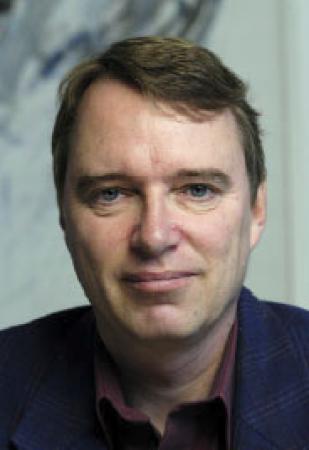
Guenter Janeschitz
Guenter Janeschitz
Deputy Head, ITER Central Integration Office
Friday, August 26, 2016
10:30am
Abstract: When one extrapolates from today’s knowledge on ITER construction, even considering that ITER could have been built much more economically, it is clear that a fusion power plant will cost > 10 – 15 B€ (the first of a kind even ~ 30 B€). Therefore in order to have an economically attractive fusion reactor it will need to produce a large amount of power (on the order of 2 GW electric delivered to the grid). Due to the fact that such a machine will need ~500 MW for its own use, it has to produce 2.5 GW electric which means a fusion power of > 5 GW and thus a thermal power > 6 GW. The possible size (R~10 m) and reasonably conservative physics basis of such a machine will be briefly described. If successful in achieving advanced physics in a burning plasma, e.g. in ITER, then the machine can be made slightly smaller but the principle arguments for a large machine will not change significantly.
Key technologies and their status will be discussed with particular emphasis on realistic blanket and divertor designs, and the size and issues of a tritium plant as well as the challenges which have to be overcome beyond what is needed for ITER. In particular the fact that such a machine will be nuclear (neutron fluency/streaming, corrosion effects, safety, contamination, radiation level for personnel, etc) will make many concepts shown today regarding blanket, divertor design, maintenance, etc., in reactor studies not viable.
Simple economic arguments will be presented to show that a large machine could be economically acceptable in today’s environment, in particular in competition to renewables. These considerations also suggest that higher fields and smaller machine size may not result in a more competitive reactor design.
Bio: Guenter Janeschitz received his PhD in physics from the Technical University Vienna in 1983, following which he accepted a spectroscopist position in the ASDEX Group at the Max Planck Institute for Plasma Physics in Garching. In 1989 he accepted an assignment at the Joint European Torus where he became Group Leader of the Boundary Physics Group in 1993. In 1994 he was seconded to the ITER Joint Central Team during the Engineering Design Activities phase, and became leader of the Divertor and Plasma Interface Division in the ITER-JCT from 1996 -2001. In 2002 he became Head of the Fusion Program at Forschungszentrum Karlsruhe, the largest fusion technology laboratory in the world. In 2008 he rejoined ITER, serving in the Office of the Director General until 2015 when he was appointed Deputy Head of the ITER Central Integration Office, a position that he continues to hold today.